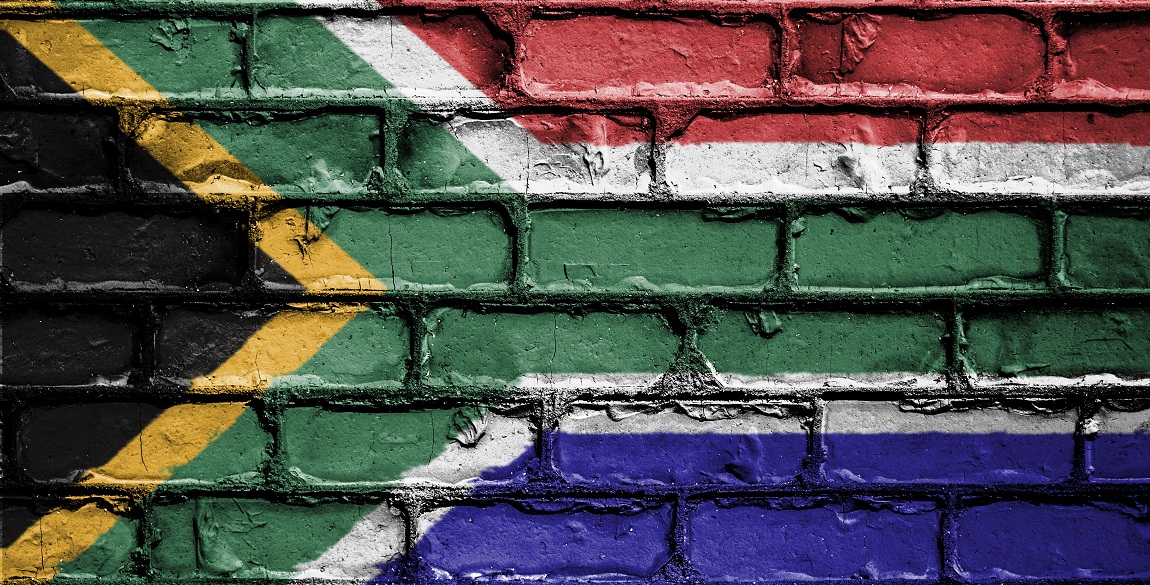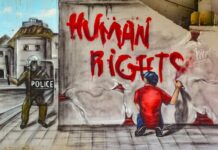Often, in efforts to get the story out, journalists forget the consequences of their actions. The manner in which the assault and rape of a school boy in Kimberley earlier this month was reported by some media – including publishing the video online – is a prime example. WILLIAM BIRD discusses why and how the media gets reporting on children wrong, and what best practices we should be following.
Children deserve and are afforded special rights. This shouldn’t be too controversial given that the UN declaration on the rights of the child has been signed by all but two nations in the world. In South Africa we have, arguably, the most comprehensive section on children in our constitution anywhere in the world.
On the face of it, children’s rights seems to be broadly accepted – but with double standards. In fact, for such a seemingly simple idea – protecting children and realising their rights – there is an amazing level of double standards. So it is common assault for an adult to slap another, but do it to a child and some people think this is acceptable “corrective action†and part of growing up.
Not surprisingly, these complexities carry through to media portrayals of children. The recent reporting of the rape of a Kimberley schoolboy by his peers at an agricultural boarding school is a clear example of this. There can be no doubt, given the subject and added racial dimensions, that the story is newsworthy. Many media, quite rightly, highlighted the brutality of the events; some raised issues of violence in the education system; and others noted the racial overtones.
In some cases, however – most notably the Diamond Fields Advertiser and the Pretoria News – their horror at the crime seemingly blinded them to the manner in which they treated the boy who had been raped and those who had committed and witnessed the assault. In so doing, they managed to expose those involved – especially the victim – to secondary trauma.
By putting the video of the assault online for all to see, by including screenshots on their front pages, and by directly and indirectly identifying those involved, the media went beyond reporting news and helping audiences understand the event and into terrain that borders on the pornographic.
So what’s wrong with this? Well there’s a long list.
The manner in which certain media covered this event serves as an example of just about everything you should not do when reporting on children. There were clear violations of the Press Code, the Criminal Procedures Act and the Films and Publications Amendment Act*. What is perhaps equally concerning is the fundamental lapse of the basics of journalism.
In covering the story this way, these media not only further violated the rights of the child but also got the basics of news and ethical practice wrong. Basic ethical practice includes the concept of minimising harm. Clearly, no regard was had in this instance.
We also need to consider whether using graphic details is necessary for the story. There may be an argument that detail was warranted, but it could have been provided without needing to identify, directly or indirectly, any of those involved. It must be pointed out that because children are involved, greater care and additional checks and balances should have been exercised.
It is, perhaps, unfair to say no effort was made at minimising harm. In some media, including City Press and those mentioned, small black strips placed over the eyes in photos of the accused were used to “hide†their identity. This is about as effective at hiding a person’s identity as a paper-mâché bullet-proof vest is against a missile. Some people argue that the black strips are tokenism at best and, at worst, semi-deliberate efforts to reveal what they attempt to hide. In any event, they are hopelessly inadequate forms of protection.
City Press, which broke the story, also carried a powerful quote from the mother of the boy who had been assaulted. “I don’t know why this has happened and I’m even more hurt that my son’s picture has been splashed all over the papers. The ordeal was enough for him. He wanted to come out and tell his story to warn other children, but now this whole thing has been turned around. I don’t know what to do and I need to be strong for him,†she said. The image of the accused, with black strips “hiding†their faces, undermined what would otherwise have been really powerful coverage.
The question is why many professional media would make such fundamental errors. There can be no doubt that there was any intention to harm. Our experience at Media Monitoring Africa (MMA) over the last decade of raising these issues with media reveals that ethical and basic a lapses occur where the impact of the story on the subjects is secondary to the story itself, or is not considered at all.
MMA also found that these violations occur where there is insufficient debate about the story before it gets published. Those newsrooms where there is regular debate about ethics and how stories should be covered tend to have higher ethical standards and make fewer errors.
We also know that far too often many media haven’t familiarised themselves with useful documents like the Press Code, or Guidelines on Reporting Children. The impact of changes in newsrooms and the decimation of the number of journalists employed means that ethical errors are more likely.
Another factor is linked to our unequal society. The majority of people who have their rights violated are poor and have little means to mediate and structure media engagement. A recent exception highlights the importance of communities knowing their rights.
At the outbreak of the xenophobic attacks in Soweto last month a 14-year-old boy was killed. By sheer coincidence, the community in which the death occurred was one in which MMA has a reader group. As a result of the work they have been doing, the participants protected the family when the first journalists arrived and refused to let them take images of the dead child. Instead, they offered pictures of the child when he was alive. As a result, the coverage afforded to the child was more sensitive and respectful.
The lessons from the latest incident highlight three clear issues. Firstly, the need for ongoing training in newsrooms and inclusion of a culture of ethical debate. Secondly, a commitment to respecting the rights of news subjects – with special care given to children and considering their rights and best interests. Thirdly, while a complicated and challenging area, reporting on children is not only rewarding, but it also helps build the credibility of the media.
The corollary to this is that poor reporting that harms children not only undermines media professionalism and ethical credibility, but causes real harm to real children. That such harm can almost always be avoided makes it more unprofessional, egregious and an action that robs the humanity of those who have taken it.
One of the best aspects about South Africa and our media is that we have emerged from a deeply harmful and morally bankrupt past. Every time a child is harmed through unethical conduct we look back to that past of rights violations and humiliation. In this regard protecting children in the media isn’t only protecting the individual child, it is about realising and protecting the rights of all children.
News has great power not only to hold those in power accountable, but also to influence the lives of those on whom it focuses. Our media has a responsibility to exercise this power with care and professionalism.
*Here are the relevant sections of the Criminal Procedure Act, the Films and Publications Amendment Act and the Press Code.
– Section 154(3) of the Criminal Procedure Act states that: “No person shall publish in any manner whatever information which reveals or may reveal the identity of the accused under the age of [18] years or of a witness (victim) at criminal proceedings who is under the age of [18] years…â€
– The Films and Publications Act: Section 24B 1(d): any person who “knowingly makes available, exports, broadcasts or in any way distributes or causes to be made available, exported, broadcast or distributed or assists in making available, exporting, broadcasting or distributing, any film, game or publication which contains depictions, descriptions or scenes: of child pornography or which advocates, advertises, encourages or promotes child pornography or the sexual exploitation of children, shall be guilty of an offence.â€
– Press Code: Section 2.7: “Reports, photographs or sketches relating to indecency or obscenity shall be presented with due sensitivity to the prevailing moral climate. A visual presentation of explicit sex shall not be published, unless public interest dictates otherwise.â€
Section 4.8: “The identity of rape victims and victims of sexual violence shall not be published without the consent of the victim or in the case of children, without the consent of their legal guardians (or a similarly responsible adult) and the child (taking into consideration the evolving capacity of the child), and a public interest is evident, and it is in the best interest of the child.â€
Section 8.1: “The Press shall exercise exceptional care and consideration when reporting about children. If there is any chance that coverage might cause harm of any kind to a child, he or she shall not be interviewed, photographed or identified without the consent of a legal guardian or of a similarly responsible adult and the child (taking into consideration the evolving capacity of the child), and a public interest is evident.â€
Section 8.2: “The Press shall not publish child pornography.†“Child Pornography is defined in the Film and Publications Act as: Any image or any description of a person, real or simulated, who is or who is depicted or described as being, under the age of 18 years, engaged in sexual conduct; participating in or assisting another person to participate in sexual conduct; or showing or describing the body or parts of the body of the person in a manner or parts of the body of the person in a manner or circumstance which, in context, amounts to sexual exploitation.â€
Section 8.3: “The Press shall not identify children who have been victims of abuse, exploitation, or who have been charged with or convicted of a crime, without the consent of their legal guardians (or a similarly responsible adult) and the child (taking into consideration the evolving capacity of the child), a public interest is evident and it is in the best interests of the child.â€
William Bird is the director of Media Monitoring Africa and an Ashoka and Linc fellow. With 20 years of experience, his knowledge of media monitoring and commitment to deepening democracy in South Africa and across the continent has ensured his expertise is internationally recognised.
– Featured image: By Orietta.Srbla via Wikimedia Commons.

![Ethics [Wikimedia]](https://www.thedailyvox.co.za/wp-content/uploads/2015/02/Ethics-Wikimedia.jpg)







